As employers plan their benefits programs for 2025, they face the daunting task of managing costs while ensuring high-quality healthcare options for their workforce. The annual premium average for employer-sponsored family coverage in 2023 was $23,968, with employees contributing an average of 27.4%, or $6,575, according to the KFF Employer Health Benefits Survey. However, access to healthcare is only the first step. Many employees struggle to navigate the complex healthcare system, often seeking medical services only in urgent situations and experiencing dissatisfaction with their care.
The Power of Employee Engagement
Employee engagement is critical in promoting better health outcomes and reducing healthcare costs. Research by Gallup shows that workers with high levels of engagement are 21% more likely to participate in wellness programs and experience 41% less absenteeism due to health issues. Engaged employees are also more inclined to make informed healthcare decisions, utilize preventive services, and adhere to treatment plans.
Better Health Outcomes through Informed Decision-Making
When employees have a solid understanding of their healthcare choices, they are more likely to:
- Utilize Preventive Services: Regular check-ups, screenings, and vaccinations can prevent illnesses and detect health issues early, improving overall health outcomes.
- Manage Chronic Conditions: Effective management of conditions like diabetes, hypertension, and heart disease reduces healthcare expenses and improves productivity.
- Avoid Unnecessary ER Visits: Educating employees about alternative care options, such as virtual primary and urgent care, can minimize costly emergency room trips.
Strategies for Success
To promote employee engagement and better health outcomes, employers should consider the following strategies:
Preventive Care
Encourage employees to prioritize preventive care, including regular check-ups and screenings. According to the CDC, boosting preventive care can save over 100,000 lives yearly in the U.S. and significantly reduce healthcare expenses.
Disease Management Programs
Offer resources and support to employees who are managing chronic conditions, reducing complications and hospital stays.
Virtual Care Options
Provide affordable and accessible virtual primary and urgent care alternatives to reduce unnecessary ER visits.
Wellness Programs
Implement wellness initiatives like fitness programs, healthy eating options, and stress management workshops. The National Business Group on Health found that companies with robust wellness strategies experienced a 25% decrease in sick leave, healthcare expenses, and costs related to workers’ compensation and disability.
Mental Health Support
Proactively address mental health challenges, such as stress, anxiety, and depression, which can have detrimental effects on physical well-being and job performance. According to the World Health Organization (WHO), every dollar spent on addressing common mental health issues can return four dollars through enhanced employee health and productivity.
Tax-Advantaged Healthcare Accounts
With healthcare costs being a major concern for employers and employees alike, tax-advantaged healthcare benefit accounts should be included in every 2025 benefits program. Employers save payroll matching expenses on all employee contributions, and employees save 30-40% on average in federal and state payroll taxes on their contributions. Depending on the types of healthcare coverage being offered, relevant tax-advantaged benefit accounts include:
- Health Savings Accounts (HSAs) offer employees enrolled in high-deductible health plans a whopping triple-tax-savings advantage. Employees get tax-free contributions, tax-free withdrawals for eligible out-of-pocket healthcare expenses regardless of age, and tax-free investment income. Balances roll over from year to year. Funds can be withdrawn without penalty for non-healthcare purposes after age 65 and taxed only at the account owner’s then-current tax rate. For these reasons, HSAs are also gaining popularity as alternative retirement accounts.
- Flexible Spending Accounts (FSAs) save employees 30-40% on payroll taxes on the funds they set aside for out-of-pocket healthcare expenses. Unlike HSAs, though, FSAs do not require a particular type of health insurance coverage (or any health coverage at all) and do not roll over continuously from year to year. (However, employers can allow a limited amount of unused funds from one plan year to roll over to the next.)
- Health Reimbursement Arrangements (HRAs) are employer-funded and work in tandem with employer-sponsored group health coverage. HRAs help employees cover expenses such as deductibles and co-pays not paid by insurance.
- Individual Coverage HRAs (ICHRAs) are special HRAs that reimburse individual coverage premiums for eligible employees not covered by employer group health plans. At the employer’s discretion, ICHRAs may also include reimbursement for qualified out-of-pocket healthcare expenses.
- Qualified Small Employer HRAs (QSEHRAs) are similar to ICHRAs but limited to companies with 50 or fewer full-time employees.
Long-Term Benefits
By engaging employees and promoting better health outcomes, employers can reap long-term benefits, including:
- Increased Productivity: A healthier workforce reduces absenteeism and improves job performance.
- Lower Healthcare Costs: Preventive care, disease management, and reduced ER visits reduce healthcare expenses.
- Enhanced Employee Satisfaction: A culture of wellness and support fosters a positive work environment, increasing employee satisfaction and retention.
Engaging employees in healthcare is crucial for achieving cost savings and better health outcomes. By implementing strategies that promote preventive care, disease management, virtual care options, wellness programs, and mental health support, employers can cultivate a healthier, more engaged, and more productive workforce, paving the way for sustained success.
For 40 years, DataPath has been a pivotal force in the employee benefits, financial services, and insurance industries. The company’s flagship DataPath Summit platform offers an integrated solution for managing CDH, HSA, Well-Being, COBRA, and Billing. Through its partnership with Accelergent Growth Solutions, DataPath also offers expert BPO services, automation, outsourced customer service, and award-winning marketing services.

